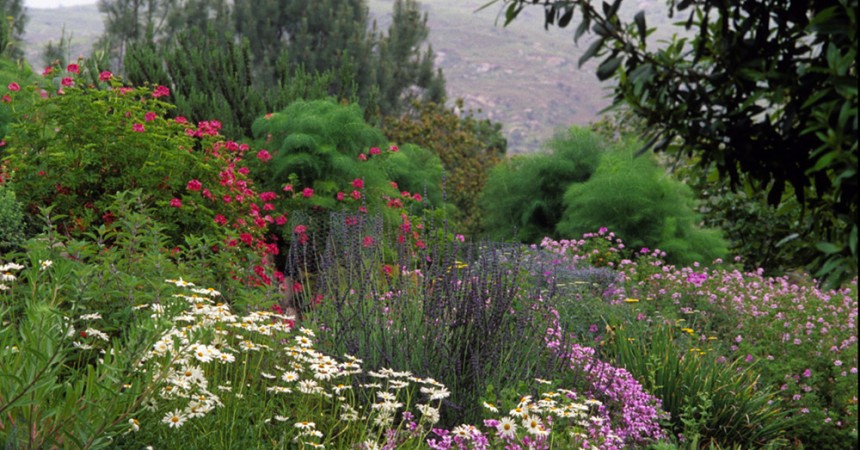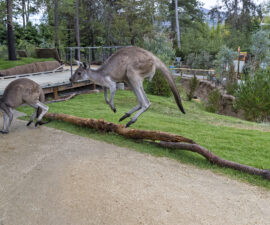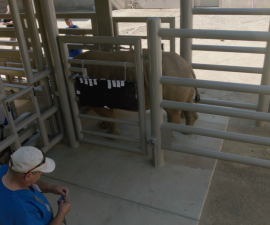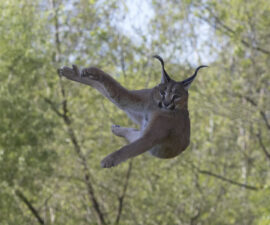Not only is the San Diego Zoo Safari Park one of the top wildlife breeding and conservation facilities in the world, it is also a world-renowned botanical garden. The Safari Park’s horticulture department cares for 1,750,000 plant specimens spanning 1,800 acres. For the last few months, I have been working with the Park’s horticulture department on a job-share a few days each week. My goodness, these are hard-working people!
The horticulture department, comprised of 35 people, divides the 1,800-acre Safari Park into sections; one staff member’s section may span several acres. Specific teams are responsible for maintaining the plants and gardens in the center of the Park, around the off-exhibit breeding facilities, near the hospital, and in the large African and Asian field enclosures. Specialized arborists, irrigation, and pest control crews also help keep the Park in tip-top shape.
Working with the horticulture department, I’ve met an extremely friendly staff, full of welcoming, encouraging people who are passionate about plants. The horticulture team members came from very disparate backgrounds to work at the Park. Some have degrees in horticulture, irrigation, or arboriculture. Some had long, successful careers in completely unrelated fields and are horticulturists as a second career. For example, some of the horticulturists used to be zookeepers, work for construction crews, or work as gardeners in the private sector.
Let me set the record straight. If you’re picturing an arthritic 90-year old planting petunias in his front garden on a lazy Sunday, then you’re not seeing the Safari Park’s horticulture team. These horticulturists are fit, efficient women and men who face risks every day. In addition to working outdoors in 100+ degree Fahrenheit temperatures, they operate heavy machinery including chain saws, wood chippers, and dump trucks. They avoid rattlesnakes, thorns, bugs, sunburn, dehydration, and rainstorms. And they do it all with (amazingly) positive attitudes. Gail Thurston, the lead horticulturist of the Field section, says that “my favorite part is the daily creativity and the ability to have every day be different and fulfilling…every day we work in a beautiful garden.”

Among the Park’s plant collection is a North African cypress, one of the most drought-tolerant and frost-resistant conifers known—and a critically endangered species, having been exploited for centuries for its wood.
In addition to beautifying the Park, the horticulturists’ work augments San Diego Zoo Global’s mission. Plants are important in their own right, therefore San Diego Zoo Global is working to conserve not only endangered animals, but endangered plants as well. In fact, the Safari Park houses many endangered plants, including Catalina mahogany Cercocarpus traskiae native to Santa Catalina Island, Wollemi pine Wollemia nobilis indigenous to Australia, and Saharan cypress Cupressus dupreziana from Algeria. These plants are endangered in their native habitats, so growing them in botanical collections like the Safari Park helps increase their population numbers. Additionally, the horticulturists cooperate with San Diego Zoo Global’s Seed Bank and Institute for Conservation researchers to preserve endangered San Diego County habitat.
The horticulture team members are as dedicated to the Safari Park’s botanical conservation mission outside of work as they are in uniform. When they are not working at the Park, many of the horticulturists can be found at botanical conferences, re-planting coastal sage scrub in fire-damaged habitats in Southern California, or studying trees in the Amazon.
Stay tuned for the second part of this blog: how the Park’s flora helps the Park’s fauna!
Elise Newman is a Caravan Safari guide at the San Diego Zoo Safari Park. Read her previous post, Wild Romance.





